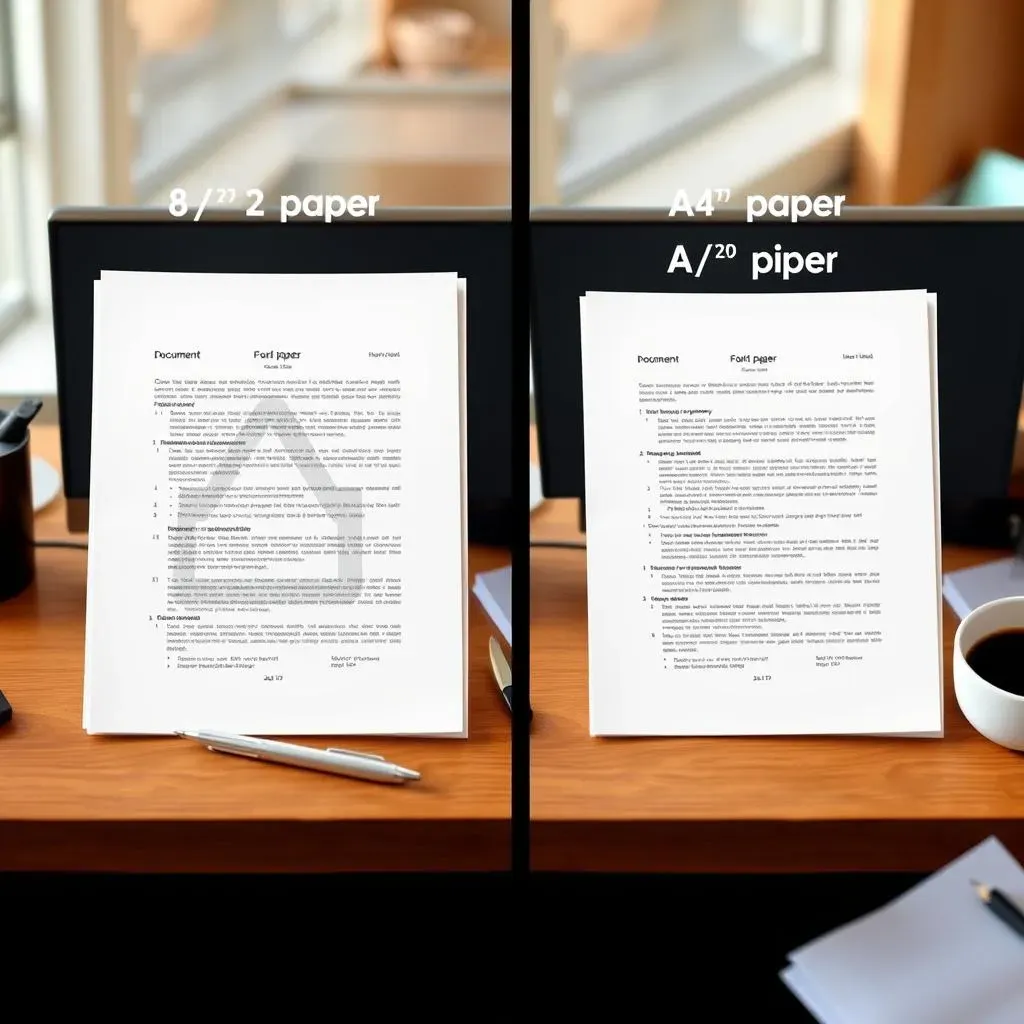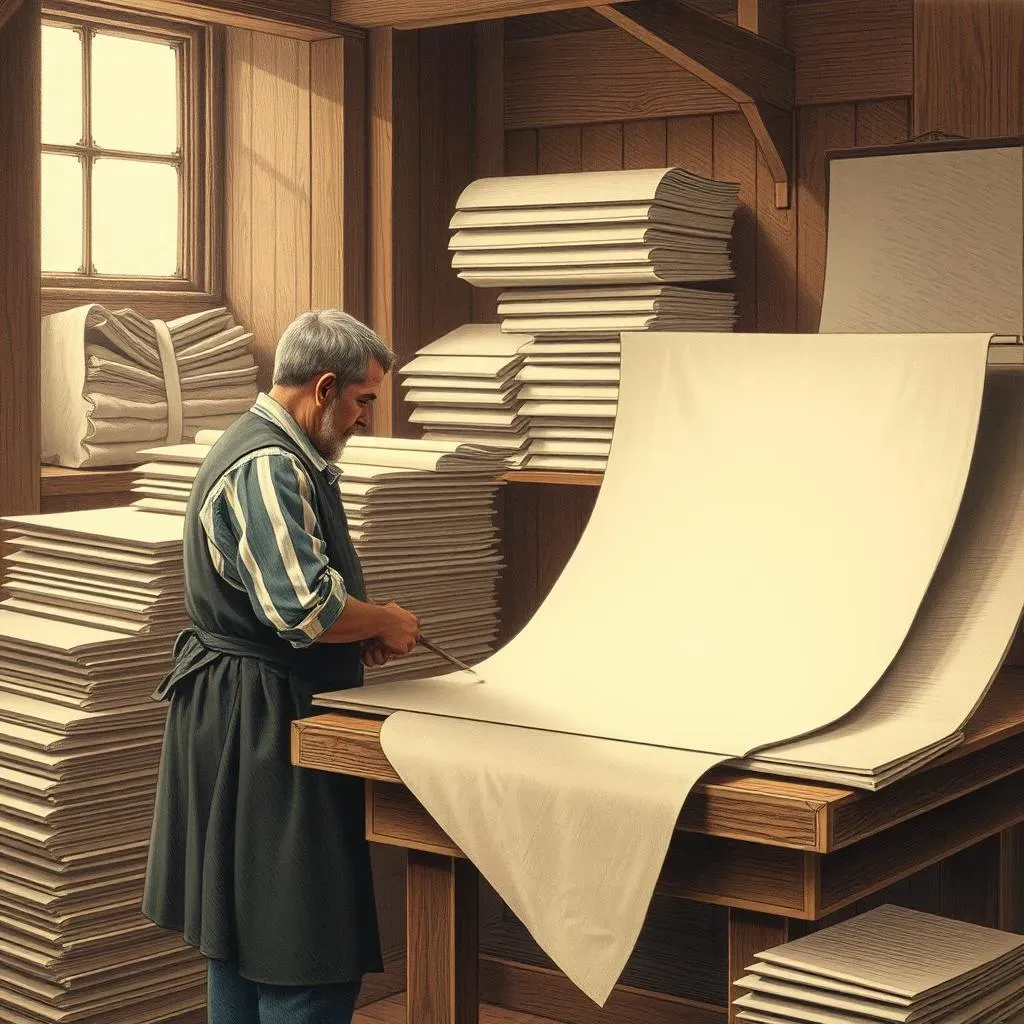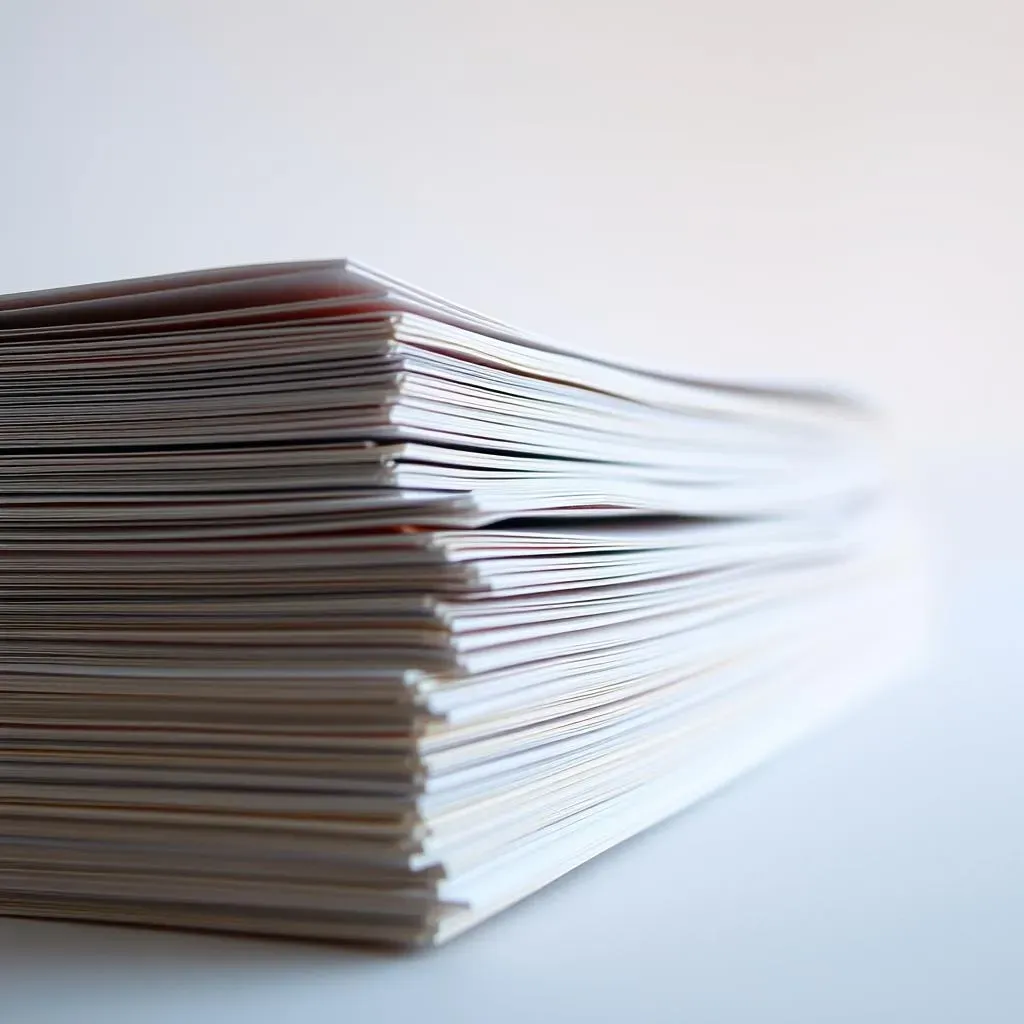Table of Contents
Ever wondered about that ubiquitous size of paper we use every day? You know, the one that fits perfectly in your printer and fills up most filing cabinets? We're talking about 8 1/2 paper, also known as Letter size. But have you ever stopped to consider why it's this specific size, or how it compares to paper sizes used around the world? This article dives deep into the world of 8 1/2 paper, exploring its dimensions, its common applications, and its fascinating history. We'll also tackle the age-old question: how does 8 1/2 paper stack up against the international standard, A4? Get ready to uncover the secrets behind this everyday essential. We'll guide you through everything from understanding its dimensions and uses to exploring its historical roots and where you can purchase it. Let's unravel the mystery of the 8 1/2 paper together!
What is 8 1/2 x 11 Paper and Why Is It Called "Letter"?
What is 8 1/2 x 11 Paper and Why Is It Called "Letter"?
The Basics of 8 1/2 x 11 Paper
Let's start with the obvious: 8 1/2 x 11 paper, or "Letter" size paper, measures 8.5 inches in width and 11 inches in height. It's the standard paper size in the United States, Canada, and the Philippines. Think about it – nearly every document you print at home or in the office is likely on this size paper. From reports and essays to resumes and cover letters, it's the go-to choice for a wide range of applications. It’s so common that many of us probably take it for granted, but the prevalence of this particular size is no accident.
But why 8.5 x 11? What's so special about those numbers? The truth is, the exact origin is a bit of a mystery. There are a few theories, but no definitive answer. One popular idea suggests that the dimensions are related to the traditional arm span of manual papermakers. Another theory links it to the dimensions of early printing presses. Whatever the reason, this size has become deeply ingrained in our culture and workflows.
Dimension | Value |
|---|---|
Width | 8.5 inches (215.9 mm) |
Height | 11 inches (279.4 mm) |
The "Letter" Designation: A Name with History
So, we know the size, but what about the name "Letter"? This designation comes from its common use for writing letters, of course! For generations, this size has been the standard for personal and professional correspondence. But it's more than just a name; it's a reflection of the paper's role in communication and record-keeping.
Interestingly, before the 1980s, the US government used a slightly smaller size called "Government Letter." The Reagan administration standardized on the 8 1/2 x 11 size for all federal forms, solidifying its place as the official standard. This standardization made things easier for everyone, ensuring consistency across all government documents. It’s a small detail, but it highlights the importance of having a universal standard for paper size.
8 1/2 Paper vs. A4: Understanding the Differences
8 1/2 Paper vs. A4: Understanding the Differences
The Tale of Two Paper Sizes
Alright, let's talk about the elephant in the room: A4 paper. While 8 1/2 paper reigns supreme in North America, A4 is the international standard. It's used just about everywhere else in the world. So, what's the deal? Why two different sizes? The answer, like many things, boils down to historical reasons and differing standards.
A4 paper is part of the ISO 216 standard, a system based on the metric system and designed for scalability and efficiency. The beauty of the ISO 216 system is that each size is derived by halving the previous size. For example, folding an A4 sheet in half gives you an A5 sheet, and so on. This makes scaling and resizing documents incredibly easy. 8 1/2 paper, on the other hand, doesn't quite fit into this neat and tidy system.
Think of it like this: 8 1/2 paper is like that quirky friend who marches to the beat of their own drum, while A4 is the well-organized, globally-minded friend who always has a plan. Both are great in their own way, but they definitely have different approaches.
Size Matters: A Direct Comparison
Let's get down to the nitty-gritty: the actual dimensions. A4 paper measures 210 x 297 millimeters, which translates to approximately 8.27 x 11.69 inches. So, A4 is slightly narrower and slightly longer than 8 1/2 paper. At first glance, the difference might seem negligible, but it can actually impact the layout and formatting of documents.
For instance, if you're designing a document in A4 and then print it on 8 1/2 paper, you might notice some content getting cut off or shifted. Similarly, if you're working with a document designed for 8 1/2 paper and try to print it on A4, you might end up with extra white space around the edges. These differences can be particularly noticeable when dealing with images or documents with precise formatting requirements.
- 8 1/2 paper: 8.5 x 11 inches
- A4 paper: 8.27 x 11.69 inches
Adapting to Different Standards: Tips and Tricks
So, what happens when you need to work with both 8 1/2 paper and A4? Don't panic! Most word processing programs and printers offer options for adjusting paper sizes. When printing a document designed for one size onto another, look for settings like "scale to fit" or "shrink to fit." These options will automatically resize the content to match the paper size, minimizing any potential formatting issues.
Another useful tip is to design your documents with flexible margins and layouts. This will make it easier to adapt them to different paper sizes without sacrificing readability or visual appeal. Consider using templates that are specifically designed for both 8 1/2 paper and A4. These templates will ensure that your content looks great no matter which paper size you're using.
Ultimately, understanding the differences between 8 1/2 paper and A4 is key to ensuring that your documents look their best, no matter where in the world they're being printed. With a little bit of planning and the right tools, you can easily navigate the world of paper sizes and create documents that are both visually appealing and universally compatible.
The Versatile Uses of 8 1/2 Paper in Everyday Life
The Versatile Uses of 8 1/2 Paper in Everyday Life
From Home to Office: Where 8 1/2 Paper Shines
so we've established that 8 1/2 paper is the standard, but let's really dive into just how many ways we use this stuff every single day. I mean, think about it – it's not just for printing out documents. It's the foundation for so much of our daily lives, both at home and in the office. From jotting down quick notes to creating important presentations, 8 1/2 paper is a true workhorse.
At home, it might be used for printing recipes, writing grocery lists, or even letting your kids unleash their creativity with drawings and paintings. In the office, it's the go-to for everything from reports and memos to invoices and marketing materials. The sheer versatility of 8 1/2 paper is what makes it so indispensable. It's the blank canvas upon which we create, communicate, and organize our lives.
Beyond the Basics: Creative and Practical Applications
But the uses of 8 1/2 paper extend far beyond the typical printing and writing tasks. Get creative! It's perfect for crafting homemade greeting cards, origami projects, or even creating personalized planners and journals. The possibilities are truly endless.
And let's not forget the practical applications. Need to wrap a small gift? 8 1/2 paper can do the trick in a pinch. Need to create a quick sign or label? It's the perfect size for clear and concise communication. The beauty of 8 1/2 paper lies in its adaptability. It's a resource that can be used in countless ways, limited only by your imagination.
- Creative Uses: Origami, greeting cards, scrapbooking, personalized planners
- Practical Uses: Gift wrapping (small items), quick signs, labels, temporary placemats
The Digital Age and the Enduring Relevance of Paper
In today's increasingly digital world, it might seem like paper is becoming obsolete. But the truth is, 8 1/2 paper remains as relevant as ever. While we may rely on computers and tablets for many tasks, there's still something special about holding a physical piece of paper in our hands. Whether it's a handwritten note, a printed photograph, or a carefully crafted document, paper provides a tactile and tangible experience that digital media simply can't replicate.
And let's not forget the importance of paper for accessibility. Not everyone has access to computers or the internet, and paper provides a crucial means of communication and information sharing for those who are digitally excluded. So, while the way we use 8 1/2 paper may evolve over time, its fundamental role in our lives is likely to endure for many years to come.
A Deep Dive into the History of 8 1/2 Paper Size
A Deep Dive into the History of 8 1/2 Paper Size
The Mystery of the Dimensions
Alright, let's get into the real juicy stuff: the history of 8 1/2 paper. It's kind of a rabbit hole, to be honest. You start digging, and you find all these different theories, but no one really knows for sure how this particular size came to be. That's part of what makes it so fascinating, though, right? The mystery!
One of the most popular theories, and I think it’s a pretty good one, has to do with the human body. Back in the day, when paper was made by hand, the size of the paper was often related to the arm span of the papermaker. The idea is that 8 1/2 paper might have evolved from a size that was convenient for these manual papermaking processes. It's a tangible connection to the past, a reminder that even something as simple as paper was once intimately tied to human labor.
Quarto's Influence and the Realm of Historical Paper Sizes
Another interesting tidbit? 8 1/2 paper falls within the range of the historical "quarto" paper size. Quarto was a common paper size produced by folding a large sheet of paper twice to create four leaves. While the exact dimensions of quarto varied, it's plausible that 8 1/2 paper evolved as a standardized version of this traditional size.
Think about it: before the advent of modern paper mills and standardized sizes, paper came in all sorts of shapes and dimensions. Quarto was just one of many. It's possible that 8 1/2 paper emerged as a way to bring some order to this chaotic landscape, offering a consistent and practical size for writing and printing.
The Reagan Era and Standardization
Fast forward to the 20th century, and we see the US government playing a key role in solidifying 8 1/2 paper's dominance. Before the 1980s, the government used a slightly smaller size. But the Reagan administration decided to standardize on 8 1/2 paper for all federal forms. This decision was a game-changer, cementing 8 1/2 paper's status as the official standard in the United States.
This standardization wasn't just about convenience; it was about efficiency and cost savings. By using a single paper size for all government documents, the Reagan administration streamlined processes, reduced waste, and made things easier for businesses and citizens alike. It's a reminder that even seemingly small decisions about paper size can have a significant impact on the way we work and interact with the world around us.
Era | Key Event | Impact |
|---|---|---|
Pre-20th Century | Manual Papermaking | Arm span theory, influence of quarto size |
Early 20th Century | Emergence of Standard Sizes | 8 1/2 paper gains traction in the US |
1980s | Reagan Administration Standardization | 8 1/2 paper becomes the official US standard |
Where to Buy 8 1/2 Paper: Your Options and Considerations
Where to Buy 8 1/2 Paper: Your Options and Considerations
The Big Box Stores: Convenience and Variety
Alright, so you're on the hunt for 8 1/2 paper? The first place most people think of is those big box stores – you know, the ones that sell everything from groceries to garden gnomes. Places like Staples, Office Depot, and even Walmart are great options because they offer a wide variety of 8 1/2 paper at different price points. You can find everything from basic, budget-friendly paper to premium, archival-quality options. Plus, they're usually pretty easy to find, with locations in most towns and cities. It's a one-stop shop for all your paper needs!
One thing to keep in mind when buying from big box stores is to compare prices and read reviews. Sometimes, the quality of the paper can vary even within the same brand. Also, be sure to check for sales and discounts – you can often snag a great deal on 8 1/2 paper if you're willing to shop around a bit. And don't forget to factor in the cost of gas and time when making your decision. Sometimes, it's worth paying a little extra to avoid a trip to the store.
Retailer | Pros | Cons |
|---|---|---|
Staples/Office Depot | Wide selection, frequent sales | Can be pricier than other options |
Walmart/Target | Budget-friendly, convenient | Limited selection of premium papers |
Online Retailers: Selection and Savings
Now, if you're like me and love the convenience of online shopping, then online retailers are definitely worth checking out. Amazon, in particular, has a massive selection of 8 1/2 paper from all sorts of different brands. You can find everything from recycled paper to glossy photo paper, all with just a few clicks. Plus, online retailers often offer competitive prices and free shipping, making it a great way to save money and time.
However, there are a few things to be aware of when buying 8 1/2 paper online. First, it's important to read the product descriptions carefully to make sure you're getting the right type of paper for your needs. Pay attention to things like weight, brightness, and finish. Also, be sure to check the seller's ratings and reviews before making a purchase. And finally, keep in mind that shipping times can vary, so plan accordingly if you need the paper by a specific date.
- Pros of Buying Online:
- Huge selection
- Competitive prices
- Convenient shopping
- Cons of Buying Online:
- Can't physically inspect the paper
- Shipping times may vary
- Potential for damaged goods
The Last Word on 8 1/2 Paper
So, there you have it – a comprehensive look at the world of 8 1/2 paper. From its ubiquitous presence in offices and homes across North America to its intriguing (and somewhat mysterious) history, this paper size is far more than just a blank slate. Whether you're printing documents, crafting reports, or simply jotting down notes, understanding the nuances of 8 1/2 paper can help you appreciate the standards that shape our daily lives. Next time you reach for a sheet of Letter size paper, remember the journey we've taken together, exploring its dimensions, uses, and the stories it holds.
